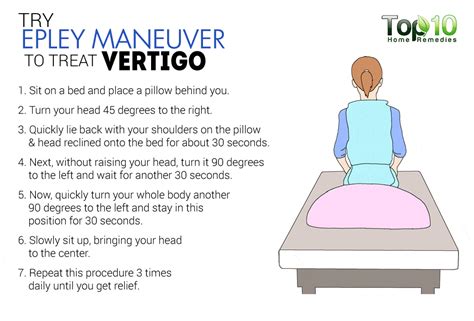Vertigo Treatment: How to Treat and Manage Vertigo Symptoms
Vertigo, that dizzying sensation of spinning or room movement, can be incredibly debilitating. Understanding how to treat vertigo is crucial for regaining control and improving your quality of life. This guide explores various vertigo treatment options, emphasizing both medical interventions and self-care strategies.
Understanding the Causes of Vertigo
Before diving into treatment, it's vital to understand the root cause of your vertigo. Vertigo isn't a disease itself but a symptom of underlying conditions, including:
- Benign Paroxysmal Positional Vertigo (BPPV): This common type results from displaced calcium crystals in the inner ear.
- Vestibular Neuritis: Inflammation of the vestibular nerve, often following a viral infection.
- Meniere's Disease: A disorder affecting the inner ear, causing vertigo, tinnitus (ringing in the ears), and hearing loss.
- Migraine-Associated Vertigo: Vertigo occurring alongside migraine headaches.
- Central Nervous System Disorders: In rare cases, vertigo can stem from brain tumors or multiple sclerosis.
Effective Vertigo Treatment Methods
Treatment for vertigo depends heavily on its underlying cause. Your doctor will conduct a thorough examination, possibly including balance tests and imaging studies, to pinpoint the problem. Here are common treatment approaches:
1. Medical Interventions
- Medication: Depending on the cause, medication might be prescribed to reduce inflammation (like corticosteroids for vestibular neuritis), manage nausea and vomiting, or control migraine symptoms. Your doctor will determine the appropriate medication based on your specific condition.
- Vestibular Rehabilitation Therapy (VRT): This specialized physical therapy focuses on retraining the brain and inner ear to improve balance and reduce vertigo episodes. Exercises are tailored to the individual's needs and progress.
- Canalith Repositioning Procedure (CRP) (Epley Maneuver): This is a series of head movements used to reposition the displaced calcium crystals in the inner ear, effectively treating BPPV. It's often performed by a doctor or physical therapist.
2. Self-Care Strategies for Vertigo Management
While medical intervention is essential for some vertigo types, self-care can play a significant role in managing symptoms:
- Dietary Changes: Maintaining a balanced diet, avoiding caffeine and alcohol, and staying hydrated can help minimize vertigo episodes. Consider keeping a food diary to identify any potential trigger foods.
- Lifestyle Adjustments: Getting sufficient sleep, managing stress effectively, and avoiding sudden head movements can significantly improve symptoms. Gentle exercise, such as walking, can also be beneficial.
- Over-the-Counter Medications: For mild nausea and vomiting associated with vertigo, over-the-counter antiemetics may provide temporary relief. Always consult your doctor before taking any medication.
When to Seek Medical Attention
Don't hesitate to seek medical attention if you experience:
- Severe or persistent vertigo: Vertigo that lasts for extended periods or significantly impacts your daily life.
- Sudden onset of vertigo: A sudden, intense episode of vertigo warrants immediate medical evaluation.
- Vertigo accompanied by other symptoms: Symptoms such as hearing loss, double vision, numbness, or weakness require prompt medical attention.
Boosting Search Engine Optimization (SEO)
To enhance the search engine optimization of this article, consider the following:
- Keyword Research: Use tools like Google Keyword Planner to identify relevant keywords, including long-tail keywords like "treating vertigo at home," "vertigo treatment exercises," and "best vertigo medication."
- On-Page Optimization: Strategically incorporate keywords throughout the article, paying attention to title tags, meta descriptions, header tags (H1, H2, H3), and image alt text.
- Off-Page Optimization: Promote the article through social media sharing, guest blogging, and building backlinks from reputable websites.
By understanding the causes and treatments of vertigo, and employing effective SEO strategies, you can create valuable content that helps others find relief and improves your online visibility. Remember to consult a healthcare professional for diagnosis and treatment.
